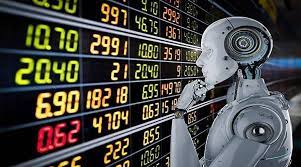
In the ever-evolving landscape of financial markets, traders are constantly seeking innovative tools and technologies to enhance their strategies and maximize profits. Among these tools, forex robots have emerged as a revolutionary forex robot, reshaping the way trading is conducted in the foreign exchange (forex) market. These automated systems, powered by sophisticated algorithms, have garnered significant attention and adoption due to their potential to execute trades with speed, precision, and consistency.
Forex robots, also known as expert advisors (EAs), are software programs designed to analyze market data, identify trading opportunities, and execute trades on behalf of traders automatically. They operate based on predefined rules and parameters, eliminating the need for manual intervention and emotional decision-making. This automation offers several advantages, including:
- 24/7 Trading: Unlike human traders who are limited by time constraints and may need rest, forex robots can operate round the clock, continuously monitoring the market and seizing opportunities as they arise. This uninterrupted trading capability enables traders to capitalize on global market movements across different time zones.
- Speed and Efficiency: Forex robots can execute trades within milliseconds, much faster than human traders can react. This rapid execution is critical in forex trading, where price movements can occur swiftly and opportunities may be fleeting. By leveraging automation, traders can enter and exit positions with minimal latency, reducing the risk of slippage and maximizing profitability.
- Elimination of Emotional Bias: Emotions such as fear, greed, and hesitation often influence human trading decisions, leading to impulsive actions and suboptimal outcomes. Forex robots operate based on logic and predefined parameters, devoid of emotions, ensuring disciplined execution of trading strategies. By removing emotional bias from the equation, these systems can adhere strictly to the trading plan, enhancing consistency and risk management.
- Backtesting and Optimization: Before deploying a forex robot in live trading, traders can conduct extensive backtesting to evaluate its performance using historical market data. This process allows them to assess the efficacy of the robot’s strategy, identify potential weaknesses, and optimize parameters for better results. By refining the algorithm based on past data, traders can enhance the robot’s profitability and resilience to changing market conditions.
Despite these benefits, it’s essential to recognize that forex robots are not foolproof solutions and carry certain limitations and risks:
- Market Volatility and Unforeseen Events: While forex robots excel in executing predefined strategies under normal market conditions, they may struggle to adapt to sudden spikes in volatility or unexpected geopolitical events. Such events can trigger sharp price movements and market turbulence, potentially leading to losses if the robot’s algorithm fails to respond effectively.
- Over-Optimization and Curve Fitting: In the quest for superior performance, traders may inadvertently over-optimize forex robot parameters based on past data, resulting in curve fitting. This practice involves tailoring the algorithm too closely to historical market conditions, which may not accurately reflect future dynamics. As a consequence, the robot may perform well in backtesting but falter in live trading when faced with unfamiliar scenarios.
- Technical Failures and Connectivity Issues: Forex robots rely on stable internet connectivity and reliable trading infrastructure to function effectively. Technical glitches, server outages, or connectivity issues can disrupt the robot’s operations, leading to missed opportunities or erroneous trades. Traders must ensure robust technical support and redundancy measures to mitigate such risks.
- Lack of Adaptability: While forex robots can execute predefined strategies with precision, they may lack the adaptability and intuition of human traders in interpreting nuanced market signals or adjusting to evolving conditions. Certain market environments, such as periods of low liquidity or sudden shifts in sentiment, may challenge the robot’s ability to make informed decisions, requiring human intervention.
In conclusion, forex robots represent a paradigm shift in trading practices, offering speed, efficiency, and automation to market participants. While these automated systems present compelling advantages, traders must exercise caution and diligence in their implementation, considering both the opportunities and risks involved. By leveraging forex robots judiciously and complementing their capabilities with human insight and oversight, traders can unlock new avenues for success in the dynamic world of forex trading.